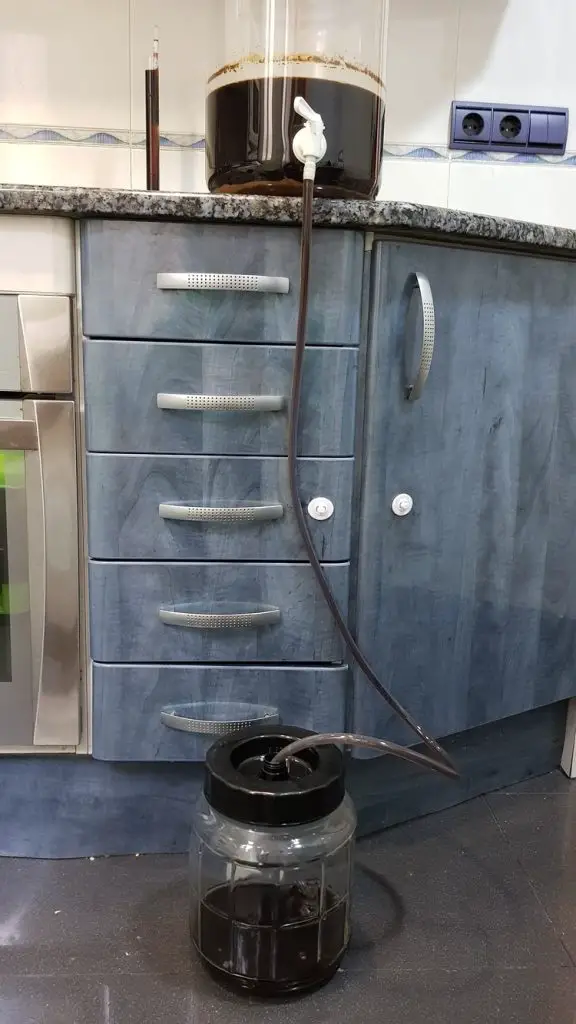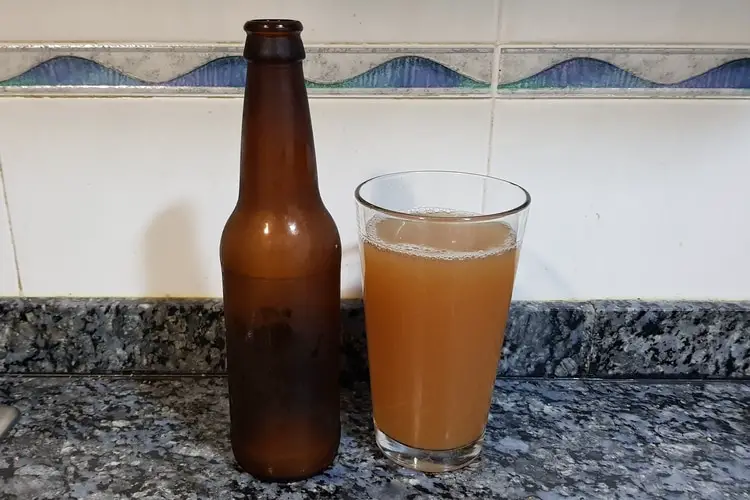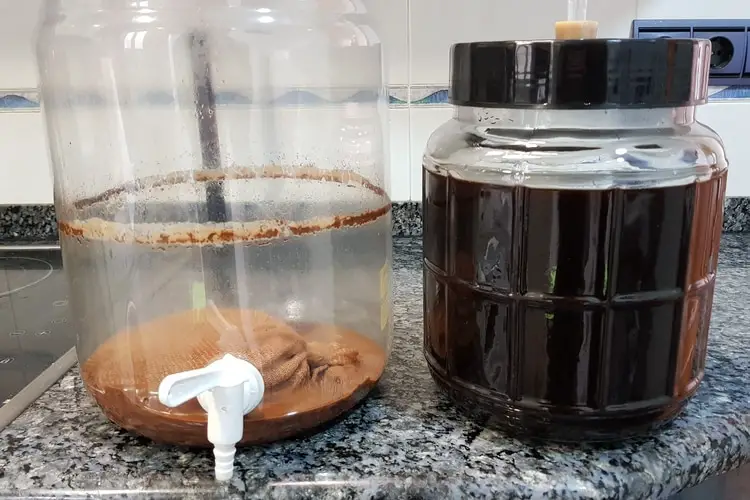Brewers are chomping at the bit to start drinking their sublime creations and butt-kicking formulations. Beginners burn with anticipation to simply try their first few batches. Secondary fermentation is a stage skipped or rushed through by many. Home brewers are often tempted by the stories of 12-day ales coming out of our favorite pub and how delicious and fresh they taste.
So, how long in secondary?
Beer can be left in secondary fermenters for up to 3 – 4 weeks for ales and up to 4 – 8 weeks for lagers and Belgians. Temperature is a factor. Keep ales at or below 64˚F (17°C), and lagers at 45˚F (7°C) or below. In most beers, 1 – 2 weeks is fine for secondary.
For longer secondary aging, the process and yeast handling must be flawless, clean, and precise.
Temperature, style, and yeast strain will assist the brewer as to the best aging time.
Fermentation times for the different styles of beers
As a general rule, I rack off of primary fermentation after 6 – 8 days.
We can call these beers Session ales. These include pales, bitters, porters, blondes, or any beer in the 4 – 6% alcohol range that use English or American yeast, and ferment between 62 – 68˚ F (16 – 20° C).
Primary fermentation is done in 5 days.
Heavy yeast remains in solution.
It is a good idea to let it settle out for a few more days.
I recommend racking into secondary for 2 weeks to follow primary.
This gives the yeast time to finish its last 5 – 10% of attenuation (the rate at which sugar is transformed to ethanol).
Also, the yeast will settle further leaving you with a hazy but relatively clear beer.
Three weeks from brew day, it is bottling time.
Plenty of yeast remains in suspension to metabolize the priming sugar and add the necessary carbonation, both for mouthfeel and aesthetics.
Fermentation of strong ales, Belgian or specialty ales
Beers north of 7% alcohol, especially above 10%, simply need more time.
They cannot attenuate down quickly and will easily take 1- 2 weeks in primary alone.
Be aware, temperature constantly affects your beer.
A 60˚ F (15° C) primary and a 68˚ F (20° C) primary will behave differently.
The first will be slow and steady while the second may blow off several quarts of beer from the blow-off hose within 48 hours!
Higher temps also increase the risk of over-attenuation.
If a strong beer gets too dry, it is out of balance.
While it may be tasty with aging, it may never be quite right.
In case of high primary temps in strong ale, a brewer should take daily hydrometer readings and immediately rack once the beer nears terminal gravity, rarely more than 75% attenuation.
So, a beer starting at 1.080 OG will finish at around 1.018, and even then be a tad dry.

Secondary fermentation of Belgian Ales
Belgian ales are an anomaly of sorts.
They are extraordinarily resilient and can age in secondary longer than standard ales.
They will ferment quickly and can stand temps in the 70’s.
Do be aware of over-attenuation here.
If brewing a Bière Blanche (White beer), it’s fine to dry it out.
However, brewing a 7% Abbey ale which I typically mashed at around 152° F (66° C), it will dry out on you at high temps.
So, stay under 70˚ F (21° C). Any warmer or cooler, other factors come into play.
Secondary fermentation of specialty ales
A couple of other styles come to mind.
German ales (Weizen, Alt and Kölsch) can age a little longer.
Additionally, Scottish yeast will age well.
These types of beers, as brewed in cooler climes, can accept 4 – 6 weeks in a secondary fermenter and will mature in flavor.
None of them are hop-forward beers, and the yeast will flocculate more slowly than in session beers.
These are good beer choices for early spring and late fall with average fermentation temps of 60 – 62˚ F (15 – 16° C).
There are many more details, including the pros and cons of secondary fermentation in the article, Is Secondary Fermentation Really Necessary and Worth the Effort? Pros & Cons.
How long can beer age in secondary before going bad?
Before going bad, beers can easily be left in the secondary fermenter for 4 weeks, and even longer if brewing a Tripel Malt or Imperial Style. Strong beers and Belgian beers will last the longest.
Hops will degrade over time, so if brewing an Imperial IPA or Extra-Strong Pale, know that you have about a 3-month window before some hop character will degrade.
Bitterness will remain. It is mostly the floral character and perhaps some nuanced taste within the palate that may suffer.
On the other hand, if brewing these styles (New England / Hazy IPA), bottle in 2 weeks and drink after 3 or 4 as they are supposed to be cloudy, raw and milky.

If you want to age a west coast style IPA, it will be fine at least one month in secondary. If you want to leave it longer, with an American or English yeast I would rack into a tertiary tank, to avoid any off-flavors from autolysis (degrading or rupture of yeast cells).
If anything, the hoppiest beers will have a preservative effect, as this is in fact the origin of IPAs; bitter, stronger beers that had to make the month-long voyage to Asia from the UK.
Can beer be left in the fermenter too long?
Belgian and German yeasts will handle aging. If you keep the ale yeast healthy and at coolish temps, 56 – 60˚ F (13 – 15° C), there is no reason you could not age the beer for months.
Belgians especially, mature and improve with age.
Session beers, not so much.
Strong ales, 8 – 12% will absolutely improve over time.
The flavors truly meld, the alcohol’s heat is offset by malt and hop balance.
Believe it or not, even a little oxidation adds to the flavor in these cases.
The formation of acetaldehyde adds a sherry-like character, adding a juicy or candy-like finish.
No need to aim for this quality!
All homebrew beer has dissolved O2 in solution and it will eventually show itself, usually to our chagrin.
Read about the trials of oxidation at length in the article, When Does Oxidation Occur in Beer and How to Avoid it.
Longer fermentation does not mean more alcohol
Perhaps just a bit for strong ales, but for a session beer, the sugar is usually played out and the yeast is finished.
At this stage, I would bottle it after 3 weeks and if clarifying and slight aging is desirable, do it in the bottle.
Beer can age nicely in the bottle too.
If beer is left too long in secondary, say over 4 weeks, viable yeast cells could go dormant or die out. When priming the beer for bottling there will not be enough active yeast to eat the sugar and produce CO2.
If there are concerns, take a half packet of quality dried yeast, hydrate it, and mix it in the bottling bucket with your priming sugar, stirring every 6 bottles or so to keep the slurry in solution.
Why can the pro brewers make beer so quickly?
How can that pub brewer make beer so quickly and deliciously?
Well, despite our experience and talents, we cheat.
Our tanks are temperature-controlled and we can crash the beer down to 32˚ F (0° C) in 24 – 48 hours.
The yeast falls quickly.
We also fine the beer, that is mix in an additive to help it clarify or even run it through a filter.
We carbonate with ceramic stones which can be quite precise.
The process is contracted to meet demand and if well done, the beer does not suffer.
That said, I recommend against rushing a beer at home or in the brewery.
4 weeks to bottle
90% of beer, excluding lagers, can be bottled and ready to drink in 4 weeks.
As detailed, specialty and stronger ales take longer and benefit from this time in aging.
In the end, decide what beer you want, that reflects your passion and desire to brew.
Find a good recipe for guidance, tweak it (easy now!), and make it your own.
A good beer represents the heart and intent of the brewer.
Be patient. Aging a little longer reveals the depth and true heart manifested within a carefully crafted beer.

